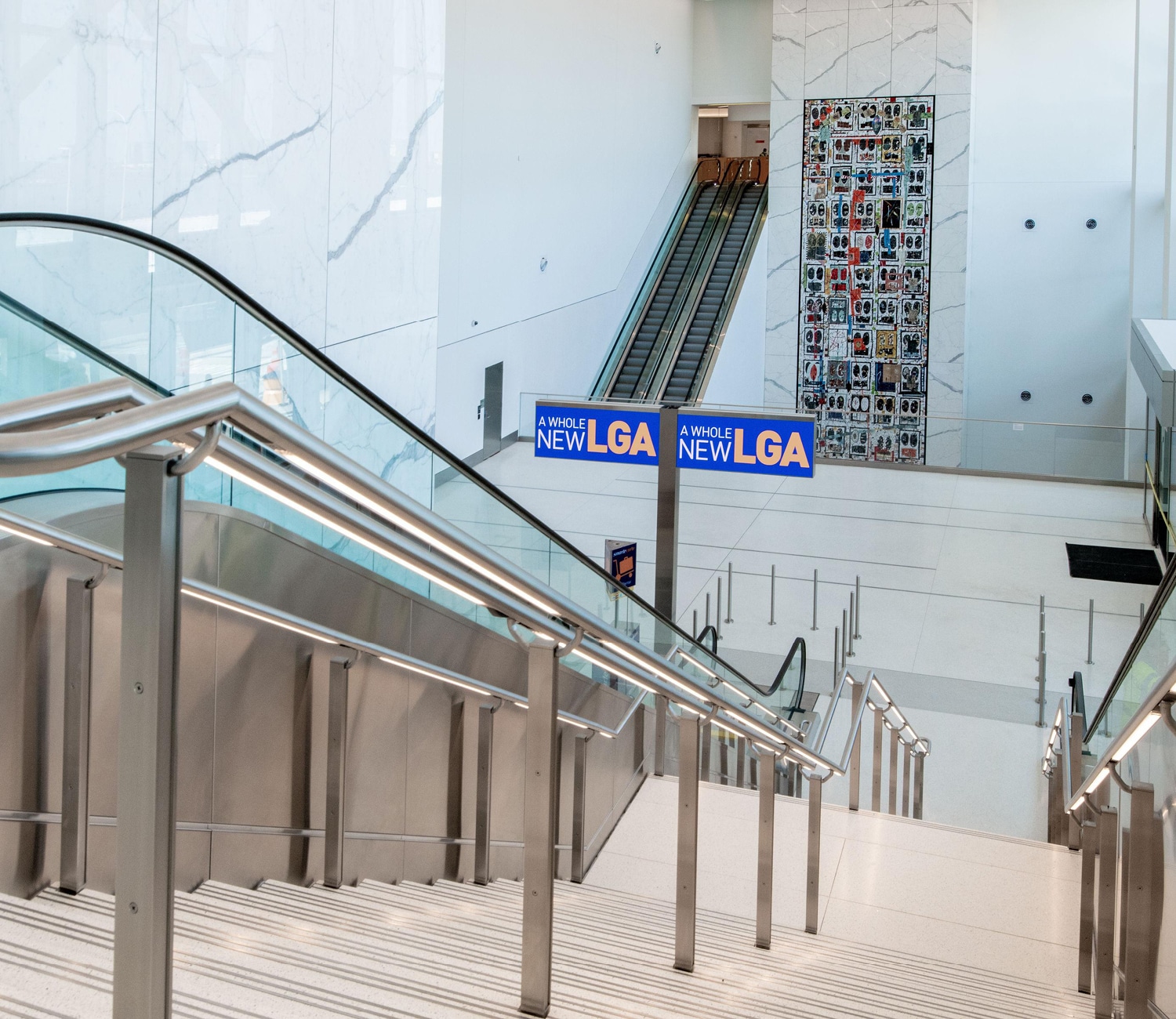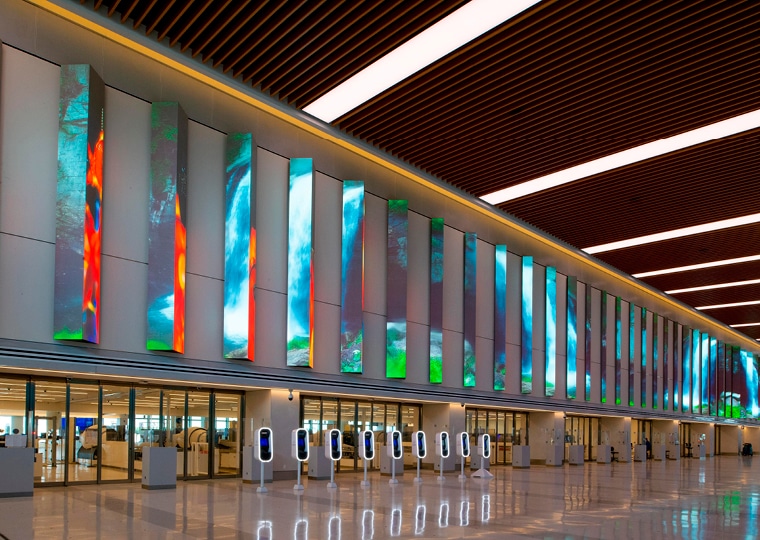When Delta Air Line’s brand new Terminal C headhouse opened at LaGuardia Airport in June, visitors not only got to experience a world class airport terminal, they also were introduced to the newest entrant in New York City’s cultural arts scene.
As part of the larger, $4 billion Terminal C construction program, Delta, in concert with the Queens Museum, initiated the integration of six different site-specific art installations.
STV, in a joint venture, served as construction management agent for Delta and played a key part in overseeing this $12 million site-specific installation of the art, leveraging its experience with arts-based spaces and other past projects for clients like the New York Metropolitan Transportation Authority and the New York City School Construction Authority.
The six installations range in size and scope and include visually impactful installations such as hanging, illuminated sculptures that dangle from varying heights throughout a three-story atrium in the arrivals and departures hall, and a 45-by-15-foot mosaic tile mural that features individual panels that weigh as much as 480 pounds.
“It feels grand and intimate at the same time,” said Stephan Freid, AIA, LEED AP, a project director and design manager on STV’s construction management team. “This is unique as an infrastructure project within the region. All art is on the public side of the terminal and can be accessed without having to go through airport security.”
To facilitate this program, STV first helped Delta review initial artist proposals before Delta commissioned the works from artists Mariam Ghani, Rashid Johnson, Aliza Nisenbaum, Ronny Quevedo, Virginia Overton, and Fred Wilson. All six artists expressed a desire to incorporate both the local culture and the experience of travel into their new pieces.
As the artists created their initial physical models, STV had to overcome a unique set of challenges for each piece. “It wasn’t as simple as hanging a piece of art on the wall after the fact,” Freid said. STV’s team coordinated with artists and fabricators via studio visits, meetings with fabricators, and working sessions with the design team, to see that all the appropriate structural elements were in place to successfully incorporate the art.
For Overton’s hanging glass sculpture installation, the team utilized BIM (building information modeling) software to help the artist visualize the suspended structures within the space. STV then spearheaded the coordination and resolution of the design of the hanging system including the procurement of a rigging contractor to lift objects up to 80 feet above the first floor. The team also had to account for hanging the sculptures overhead while construction was ongoing and fast-paced on the rest of the adjacent headhouse space.
The hanging installations were further challenged by the fact that the sculptures were being suspended from three levels of ceilings, with different geometries and finishes as well as integrating a centralized lighting control system for the art into the building
“It was very helpful for the artist to see our BIM model because we could drive through the model with them, allowing them to get a good sense of the installation’s composition better and faster than if they were creating their own physical model in a studio,” Freid said.
Johnson’s mosaic tile installation was the first piece to be installed during the construction of the headhouse. The work is mounted to subframes, so STV’s team worked with a specialized tile contractor to rig and install the panels. The heavier lower panels were manually lifted with a “chain fall” into alignment, while some of the smaller panels near the top of the mosaic – about 60 feet above the floor – were mounted using a motorized lifting device.

“That took us about six or seven working days to execute and since it was the first installation – and a very complicated one at that – we all breathed a little easier when it was completed and it set a positive tone for the remaining art,” Freid said.
To date, the installation has been completed for Johnson, Quevedo, Overton and Ghani’s work, with two more installations to be completed over the coming months.
“I feel very personally invested in the program,” Freid said. “People in the art community are aware of what we’re doing. I view this as another cultural hub in New York City. I think people will come here specifically to look at the art.”






